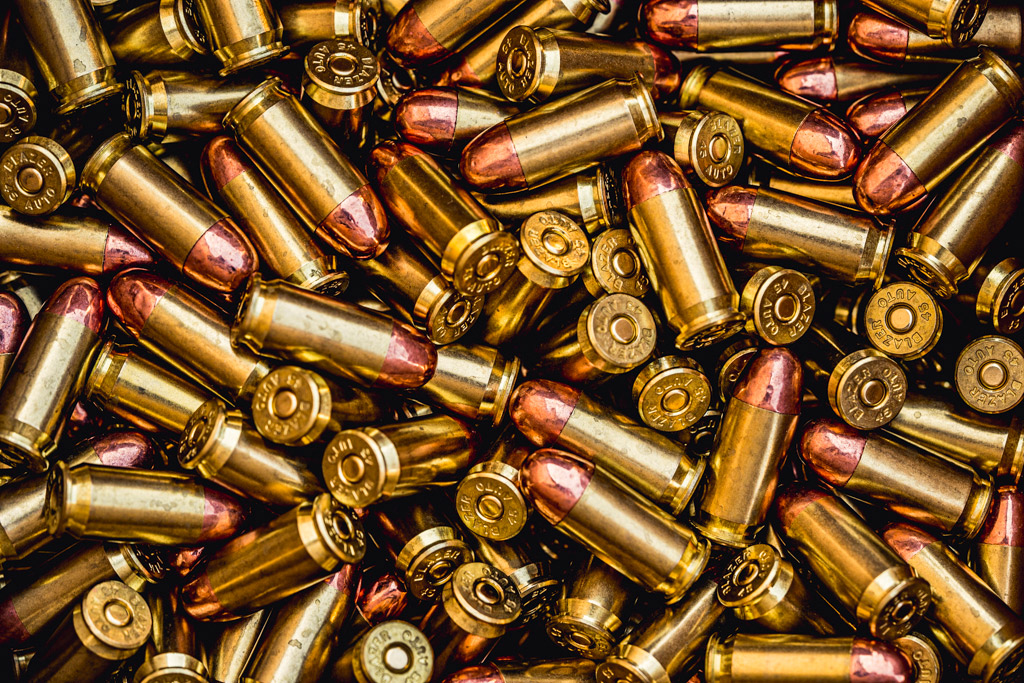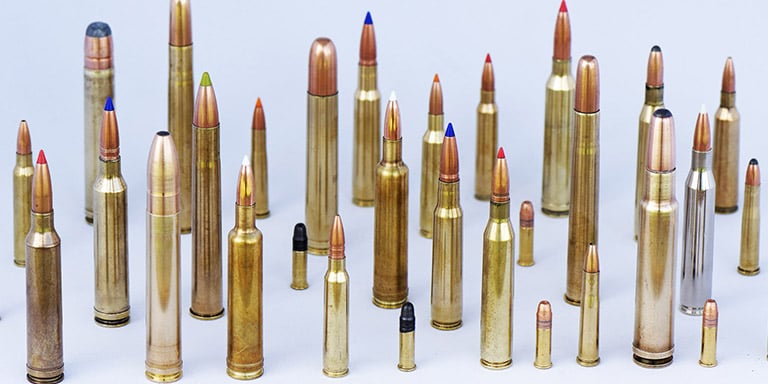The 5-Minute Rule for Ammunition Pro Llc
The 5-Minute Rule for Ammunition Pro Llc
Blog Article
Getting My Ammunition Pro Llc To Work
Table of ContentsUnknown Facts About Ammunition Pro LlcExamine This Report about Ammunition Pro LlcThe smart Trick of Ammunition Pro Llc That Nobody is Talking AboutThe Only Guide for Ammunition Pro LlcRumored Buzz on Ammunition Pro Llc
Many modern cartridges contain 4 main components the situation, primer, propellant, and projectile. A shotgun cartridge, even more frequently referred to as a shell, consists of 5 parts the situation, guide, propellant, projectile(s) and heap. Allow's look at each component of a round, just how it functions, and choices that might be offered: The covering is the container, or housing, right into which all the various other parts fit.Technically, the raised use steels apart from brass have made this jargon unreliable, nonetheless, it stays a typically used and accepted term. If you will certainly be refilling you need to stick with brass, brass alloy or layered brass. Pure very first run brass is best; nonetheless, recycled brass can be utilized. ammunitions for sale.
Other types of brass, consisting of alloys or layered variations, can be made use of but will have a much shorter lifetime. Early guns counted on gunpowder, which is a specific combination of chemicals that burns swiftly and promptly develops broadening gases as it burns. Developing the ability to constrain and control the burning procedure and gas development was the key to developing dependable, and safe, firearms.
Because of its instability gunpowder has been replaced by modern chemical substances that complete the very same result without the risk. The most typical of these combinations is saltpeter, sulfur, and charcoal. The outcome is a propellant that melts quickly, is reputable and more secure. The propellant requires a smaller cost to be securely sparking and this is achieved by the primer.
What Does Ammunition Pro Llc Mean?
As holds true with the propellant, gunpowder has actually been replaced by even more stable contemporary chemical compounds in the building and construction of the primer. Quality primers are important to proper, trusted ammunition efficiency. A damaged or wet primer will certainly typically result in failure to fire or a delayed, hang, fire scenario.
the bulletEvery firearm requires a things that will be removed from the gun which will, in turn, be used to strike the designated target. This item is called the projectile, although the terms bullet, slug or shot are commonly used in its place. In reality rifles & handguns fire bullets while shotguns fire slugs or shot, the latter being used to describe a group of pellets gotten rid of from a solitary covering or housing.
Bullets, which is an appropriate term for the projectile for a lot of modern guns, come in a variety of kinds. Each is designed for a various function and might or may not cycle effectively in every firearm.

Ammunition Pro Llc Things To Know Before You Buy
As discussed previously, the case is the real estate right into which the other components are housed. When it comes to centerfire cartridges (one of the most typical sort of modern ammo) the primer is matched a pocket in the base of the instance, the propellant is loaded into the hollow interior room and a projectile (also known as bullet) is secured right into the open end.
The firing pin, in turn, moved swiftly onward and strikes the primer. Once struck by the shooting pin the guide sparks and practically promptly fires up the propellant by allowing a fire to go into the cartridge via a tiny opening behind the primer cap. This results in an instantaneous chemical response that produces expanding gases which, due to the confined room within the situation, trigger the projectile to be quickly expelled.
Obviously, every weapon proprietor has a responsibility to review the proprietor's guidebook and method risk-free shooting. Prior to you understand it, you will be the one others come to for details, waiting patiently while you shoot so they can ask "Is it a bullet, ammunition, or cartridge?".
The Only Guide to Ammunition Pro Llc

All are examples of self-contained ammo, which has been with us for well over a century. Utilizing these 4 parts, ammo is either made by manufacturing facilities or handloaders, and though the cosmetics and design of the basic components have actually developed and remain to do so, their total function and how they function together have not.
Cartridge instances are typically made of brass. They will certainly hold the primer, gunpowder, and projectile. (Photo/Richard Mann)The cartridge instance is what holds all self-supporting ammo together. With rifle and pistol ammunition, the instance is in some cases referred to as "brass." With shotguns, the situation is frequently called a shell or a hull.
Ammunition Pro Llc for Beginners
Brass cases are reloadable, while steel situations are not. With shotgun hulls or coverings, the base is made of brass for toughness, and the remainder of the case is made of plastic for economy.
With the majority of shotgun shells, extra info concerning the lots is published on the plastic portion of the hull. Firearm Ammunition. Centerfire guides fit right into the cartridge or covering head, and when affected by the firing pin they develop a trigger to begin the gunpowder burn. (Photo/Richard Mann)There are two kinds of priming methods utilized in contemporary, self-supporting ammunition
Report this page